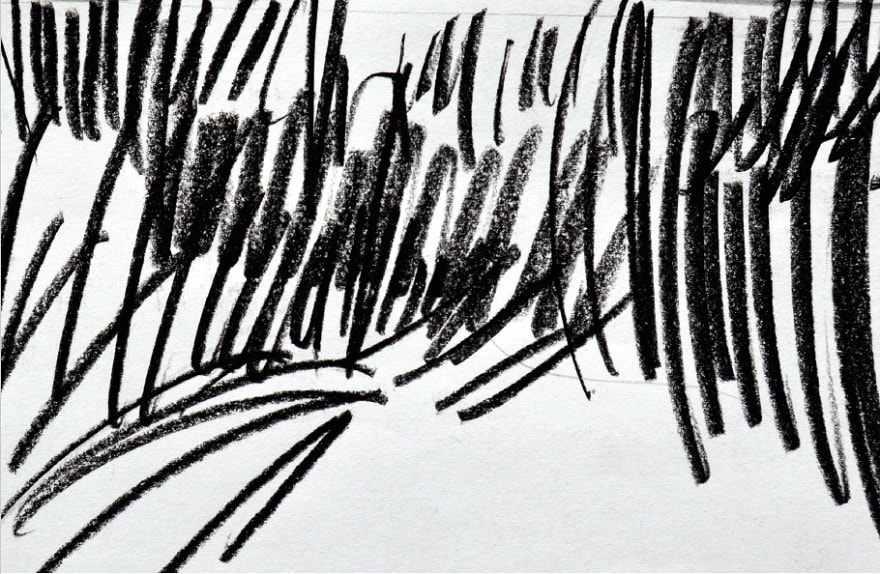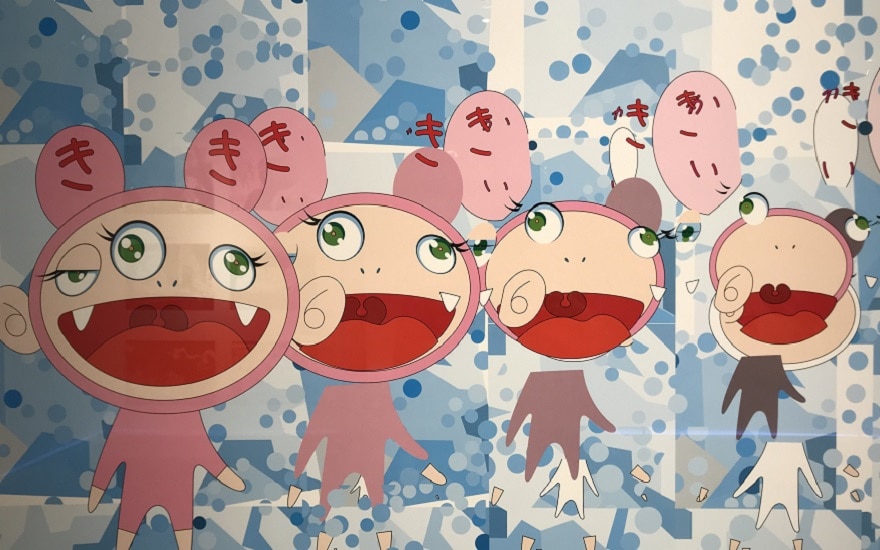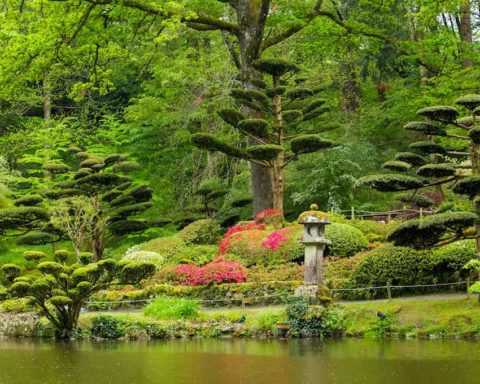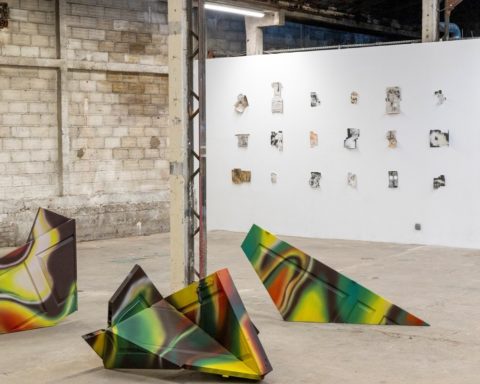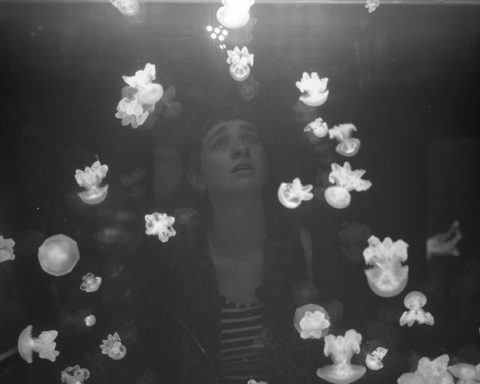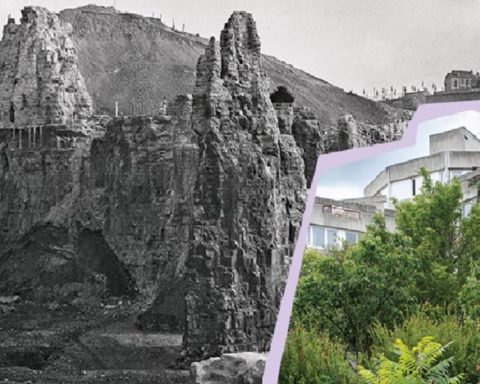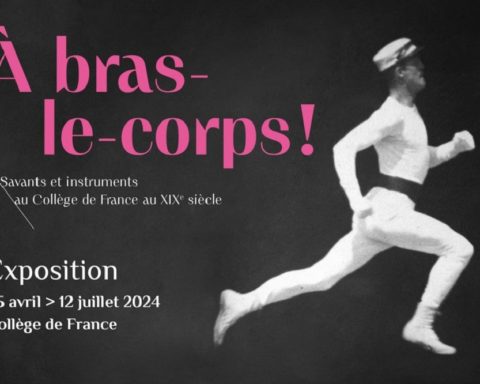The Malagasy artist Joël Andrianomearisoa will be presented for the first time at the Madagascar Pavilion of the Venice Biennale 2019, with the support of Rubis Mécénat, through production and publishing assistance. This support is part of the creation in Madagascar of its new socio-cultural project initiated in Antananarivo : Ndao Hanavao.
Por the first time in its history, Madagascar will participate with its pavilion in the 58th edition of the Venice Biennale, from 11 May to 24 November 2019. Joël Andrianomearisoa has been chosen to represent his country, accompanied by curators Rina Ralay Ranaivo and Emmanuel Daydé, because of the invention and maturity of his work and his international reputation.
This first participation in the Venice Biennale is a historic event for Madagascar. It is a sign of dynamism and modernity for the Malagasy nation, while reflecting a positive image of the country on a national and international level. It is a message of hope, which testifies to the will to inscribe Madagascar's creative forces in the great world currents.

The labyrinth of passions, Joël Andrianomearisoa Textile, 2017 Courtesy Primo Marella Milan
Entitled "The Materiality of Emotions", the exhibition in the Malagasy pavilion will take place in the following locations "around emotions, which everyone perceives without being able to name. It is likely that the theatricality is hidden in the folds of a cascade of black paper, finally enveloping each visitor in the mantle of a spirit filled with light.according to Commissioners Rina Ralay Ranaivo and Emmanuel Daydé. Supported by the Ministry of Culture, Promotion of Handicrafts and Heritage Preservation, Madagascar's participation in the Venice Biennale is produced by the associations Kantoko and Revue noire.

The labyrinth of passions , Joël Andrianomearisoa Installation, media mix, tissue paper, 2016. Courtesy Sabrina Amrani Madrid © Rijasolo
Born in 1977 in Antananarivo, Madagascar, Joël Andrianomearisoa lives and works between Paris and Antananarivo. A graduate of the Ecole Spéciale d'Architecture de Paris, his work has been used in many supports : performance, drawing, sewing, design, video, photography, architecture. Andrianomearisoa has notably exhibited at the Institut français de Madagascar, the Biennale de Dakar (Senegal), the Maxxi in Rome (Italy), the Hamburger Bahnhof in Berlin (Germany), the Smithsonian in Washington (USA), and the Centre Pompidou in Paris. He is represented by the Sabrina Amrani (Madrid), Primo Marella (Milan) and Rx (Paris) galleries.
Exhibition from 11 May to 24 November 2019 - Madagascar Pavilion at the Venice Biennale
Inauguration of the Madagascar Pavilion Thursday 9 May at 11.00am - Arsenal, Venice
Ndao Hanavao, innovation and creation laboratory for social design in Antananarivo -Madagascar
Third socio-cultural project of Rubis Mécénat, Ndao Hanavao (Let's innovate) is a local initiative initiated by Rubis Mécénat in association with Vitogaz Madagascar in Antananarivo, Madagascar.
Innovation and creation laboratory designed by guest designers for young Malagasy people in vocational training, with craftsmen, engineers and local actors, Ndao Hanavao seeks to find viable and sustainable solutions, through the design of design objects, to certain societal problems faced by the Malagasy population living in great precariousness.

Rijasolo
Ndao Hanavao is a project adapted to the problems linked to the territory of Madagascar, one of the poorest countries in the world. More than 1.5 million children do not attend school or have dropped out after the first three years. In order to reduce inequalities, many associations and NGOs intervene to reintegrate them into school and work. Already active in the country, the Rubis Group, with its subsidiaries Vitogaz Madagascar and Galana, supports the Graines de Bitume association in Antananarivo and the Toamasina primary school in Tamatave.

Workshop Polyfloss, Ndao Hanavao laboratory, 2018 © Rijasolo
To make its support more active, Rubis Mécénat has chosen, in 2018, to set up with Vitogaz Madagascar this social design training programme for young Malagasy adults in professional reintegration. A place for training, experimentation and development, the laboratory Ndao Hanavao has given itself the mission, in the framework of its first edition, to find viable solutions for the treatment of plastic waste but also to enable young people in training to create their own commercial structures and to collaborate with a flourishing local craft industry.
For its first edition, Ndao Hanavao invited French designers Christophe Machet and Émile de Visscher, from The Polyfloss Factory, to develop the concept of their Polyfloss machine in Antananarivo in order to set up a first long-term incubation, experimentation and training workshop for the transformation of plastic waste, a major local issue.
The Polyfloss Factory project is born at the Royal College of Art in London in 2011. The team, made up of Audrey Gaulard (textile and robotics designer), Nick Paget (industrial designer), Christophe Machet (mechanical systems engineer and designer) and Émile De Visscher (materials science engineer and designer), is questioning itself about ecology and decides to imagine a plastic recycling process on a local scale.
After various tests, designers discovered that one of the great advantages of plastic is its ability to form foam - a property that none of the other common materials can easily acquire. So they decided to produce recycled plastic foams, made in the same way as cotton candy. The Polyfloss Factory has worked with many institutions and schools in the UK and abroad, setting up workshops and developing new uses.
 Machine Polyfloss, HyperVital exhibition at the Saint Etienne Design Biennial, 2015, curated by Benjamin Loyauté © Rijasolo
Machine Polyfloss, HyperVital exhibition at the Saint Etienne Design Biennial, 2015, curated by Benjamin Loyauté © Rijasolo An innovative plastics recycling process inspired by cotton candy, The Polyfloss Factory produces a flexible wool that can be reused in a variety of ways as thermal insulation, packaging, design objects, and can also be used for textile and craft creations, moulding, and the design of objects with use value.

Production of Polyfloss, as part of Waste Not Want It 3, Bloomberg Headquarters, United Kingdom, 2013 © Elisabeth Molin
As part of the collaborations set up with artists, the artist Joël Andrianomearisoa, will create a work entirely made from Polyfloss wool for his solo exhibition at the Frac Réunion in September 2019.
By inviting two inventors to travel and adapt their Polyfloss Factory, which proposes a new process for recycling plastics on a human scale, Rubis Mécénat intends to shape the starting point of the Ndao Hanavao project, "Let's innovate". From dream to visible initiative, from resolution to factual force, the project makes it possible to design solutions for transforming waste into objects of necessity and creativity, offering "a short and sustainable economic cycle designed for, and led by, Malagasy people". Émile de Visscher and Christophe Machet address the question of tools as actors of emancipation. The Ndao Hanavao project welcomes The Polyfloss Factory to inaugurate a "do" approach based on the observation that waste is an important resource for the city and that it is necessary to be able to treat it locally. The Polyfloss process makes it possible to obtain a "cotton candy" of recycled wool that can be knitted, formed, pressed or re-melted ad infinitum. Deploying it and reinventing it on Malagasy soil makes it possible to invest in reality in the face of the plastic pollution with which the Malagasy population is confronted. Without turning away from contemporary uses and formal stakes, Ndao Hanavao creates an economy of attention that goes to meet other cultures and in a more inter-individual way, to meet our own actions (...). By recycling plastic in an innovative way and by bringing this habitual material - industrial on the scale of artisanal re-creation, The Polyfloss Factory aims to be a tangible, exploratory, playful and collaborative response to the pollution of the city's waste. For more than a year, the two creators and the team set up on site have been able to evaluate, analyse, identify a set of available sources of plastic waste, assess needs and understand habits and lifestyles through current uses. This data has made it possible to "evaluate the market and identify relevant applications" that the Ndao Havanao project is carrying out today.Benjamin Loyauté, commissioner of the Ndao Hanavao project Extract from the text " L 'Company of Faire ', 2019".
Plastics: the challenge of the Ndao Hanavao project
Madagascar is one of the richest countries in raw materials. However, it seems that its inhabitants do not have access to them. They are sold abroad. Plastic, on the other hand, enters the territory and doesn't leave. The island is emptied of all its wealth and filled with plastic. How can we change that? How can we turn this material into a new resource that integrates with the craft skills and Malagasy identity rather than a poor and dirty waste? This is the challenge of the Ndao project.
From the collection of sorted plastic waste by a network of collectors at Antananarivo's rubbish dumps, to the production phase in the workshop organised by the two guest designers and the young people in training, the recycled plastic is transformed on site into finished products: objects of use value and basic necessities. This same transformed plastic can also be resold (in the form of panels, wool, felt rolls, etc.) as a building material or as raw material for local crafts.
We look forward to developing innovative techniques that take advantage of the craftsmanship and thermoplastic qualities of the material and parts that use a high-performance, yet recycled, material.Christophe Machet, designer, The Polyfloss Factory "
Today, the project welcomes ten young Madagascans, aged 17 to 20, for training and professional reintegration with local associations such as Enda, Manda and Graines de Bitume. The participants benefit from five to ten days of training per month with introductory courses in design, French and life skills as well as entrepreneurship training. From the implementation phase of the Polyfloss project in Madagascar to its development phase, the young participants are invited to undertake and empower themselves, notably by developing collaborative initiatives with local craftsmen. At the end of their training, they will have all the keys in hand to ensure the continuation of Polyfloss wool production in Madagascar and to develop their own social and solidarity-based economies around the Ndao incubation and experimentation laboratory.

Polyfloss Wool Production - Photo © The Polyfloss Factory
I was] asked, among other things, to give introductory courses in design as part of the Ndao Hanavao project, which enables young people to learn a discipline for which they had no predisposition. This path, which was at first rather foreign to them, becomes more and more meaningful as our work progresses. We put this work of transmission with the young people in correlation with their needs. Carine Ratovonarivo, designer and project coordinator. »
The Rubis Mécénat association
As part of its support for contemporary artistic creation, Rubis Mécénat develops long-term artistic and social initiatives with the subsidiaries of the Rubis group in order to act within local communities and enable the subsidiaries to position themselves as social and cultural players, alongside the economic role played in the countries.
Three initiatives are today supported by Rubis Mécénat: Of Soul and JoyA photographic project in South Africa (since 2012), InPulse Art projecta creative platform for the visual arts in Jamaica (since 2015), and Ndao Hanavao (since 2018).
As creative platforms located in local communities, these educational programs offer young people in rehabilitation, workshops led by recognized artists, as well as general refresher courses that allow students to acquire academic and artistic skills.
Through its commitment, Rubis Mécénat creates lasting bonds of solidarity and trust. By going as close as possible to those who are the most distant from art, affirming his belief in educational and societal virtues. An outreach that not only reaches out to students, but also invites the local community to enter into a constructive dialogue around visual arts and design.
Next exhibition :
 Ndao Havanao invites the French designer Laureline Galliot to come in autumn 2019 to experiment with Polyfloss wool and to make a series of digital drawings inspired by the project.
Ndao Havanao invites the French designer Laureline Galliot to come in autumn 2019 to experiment with Polyfloss wool and to make a series of digital drawings inspired by the project. After studying textile design at ENSAAMA (École Nationale Supérieure des Arts Appliqués et des Métiers d'Art), Laureline Galliot chose to study product design and graduated from ENSCI -Les Ateliers in 2012. Influenced by her intuitive, compulsive, tactile practice of painting on iPad, Laureline Galliot explores the new forms of pictoriality offered by virtual sculpture and colouring software. Combined with a 3D printer, they enable her to produce objects directly painted in three dimensions, giving rise to a new form of "chalkware"; plaster craftsmanship.
She won the vase design prize at the Villa Noailles in 2013; her pieces join the French national design collections of the CNAP. Her work is exhibited in museums and art centres such as the Swiss Institute in New York, the Mudam in Luxembourg, the SEEDS gallery in London, the Madd in Bordeaux, the Centre Pompidou in Paris and more recently the MAD in Paris.
Since 2015, she has been editing designs with the Italian carpet manufacturer Nodus and developing textile series with Austrian, Italian and Japanese manufacturers (as part of her residency at the Villa Kujoyama supervised by the French Institute and the Bettencourt Schueller Foundation, Kyoto, 2017).
Photo : Prototype pitcher " Jug " Laureline Galliot, 2012 3D mineral powder inkjet printing. Acquisition CNAP 2015 © Laureline Galliot
Header photo : Joël Andrianomearisoa, The labyrinth of passions, (detail). Installation, media mix, tissue paper, 2016. Courtesy Sabrina Amrani Madrid

